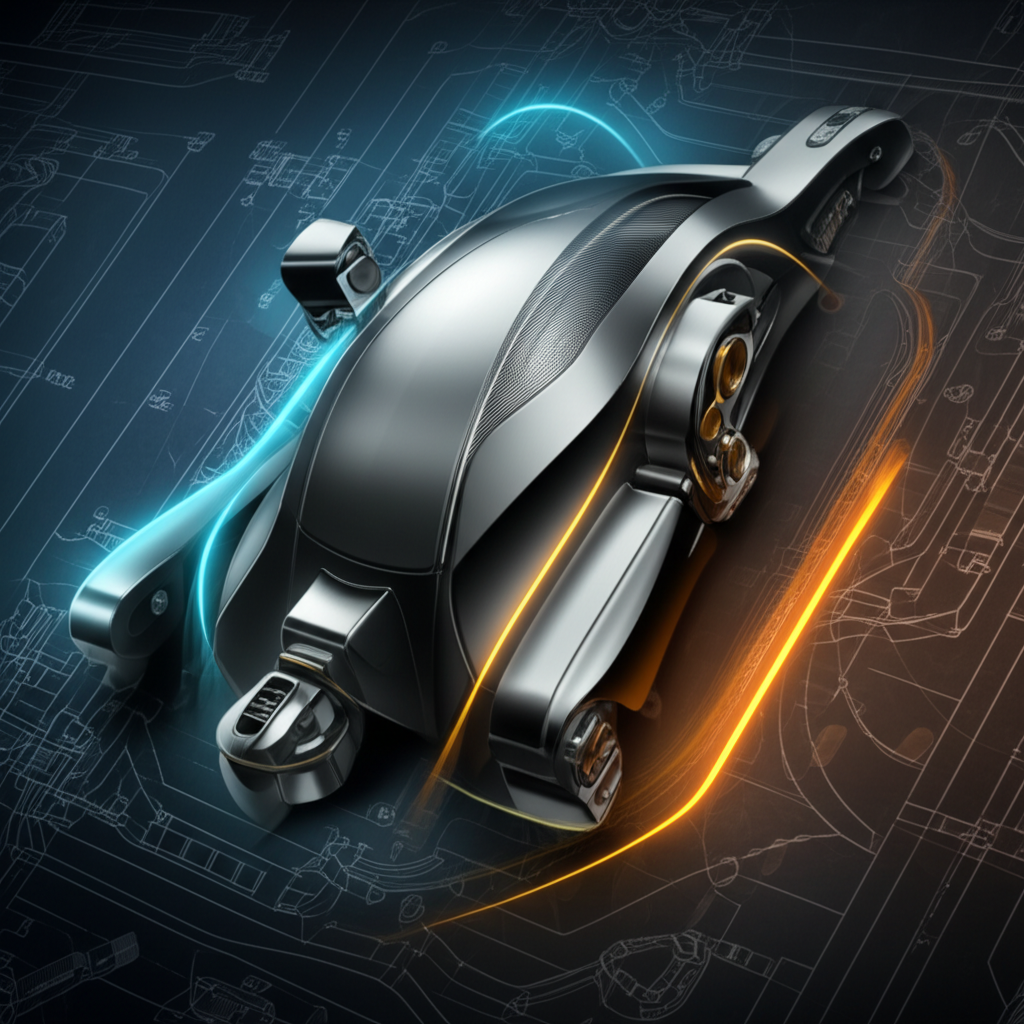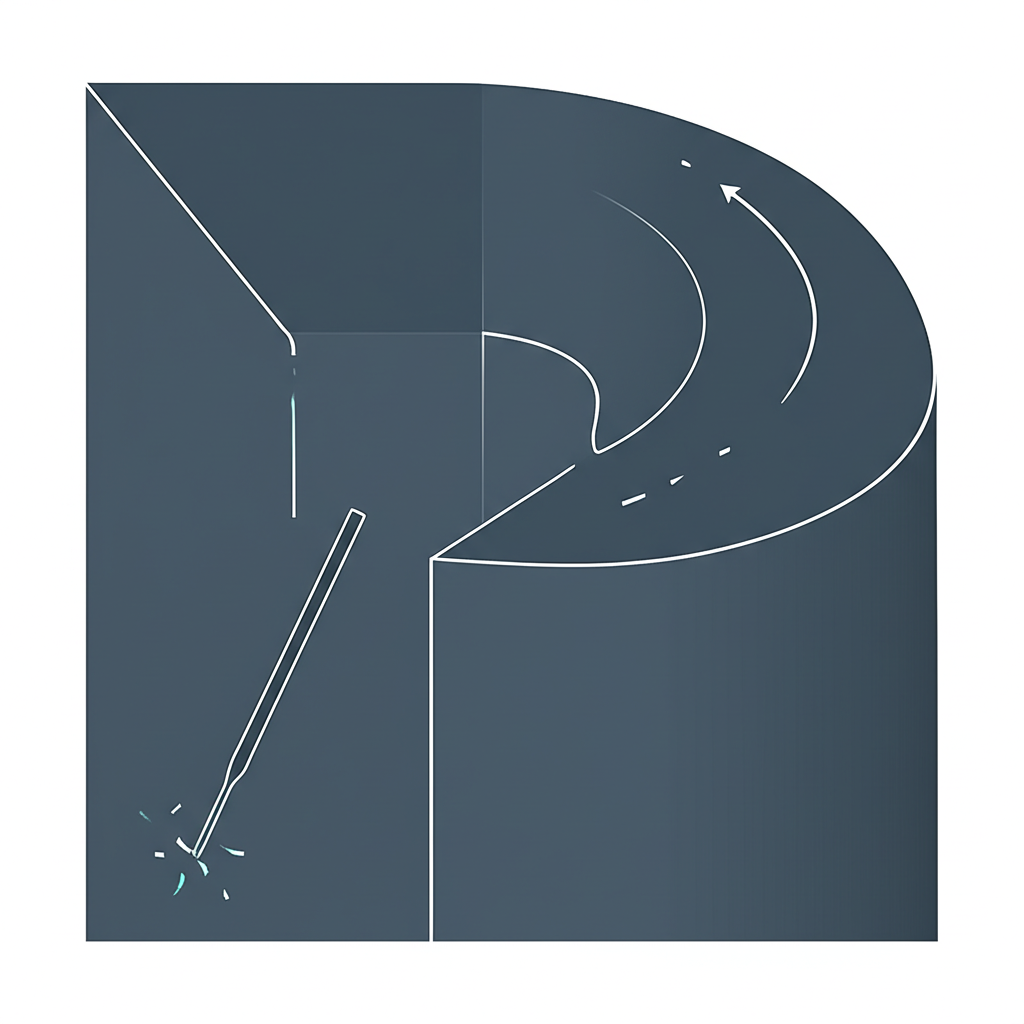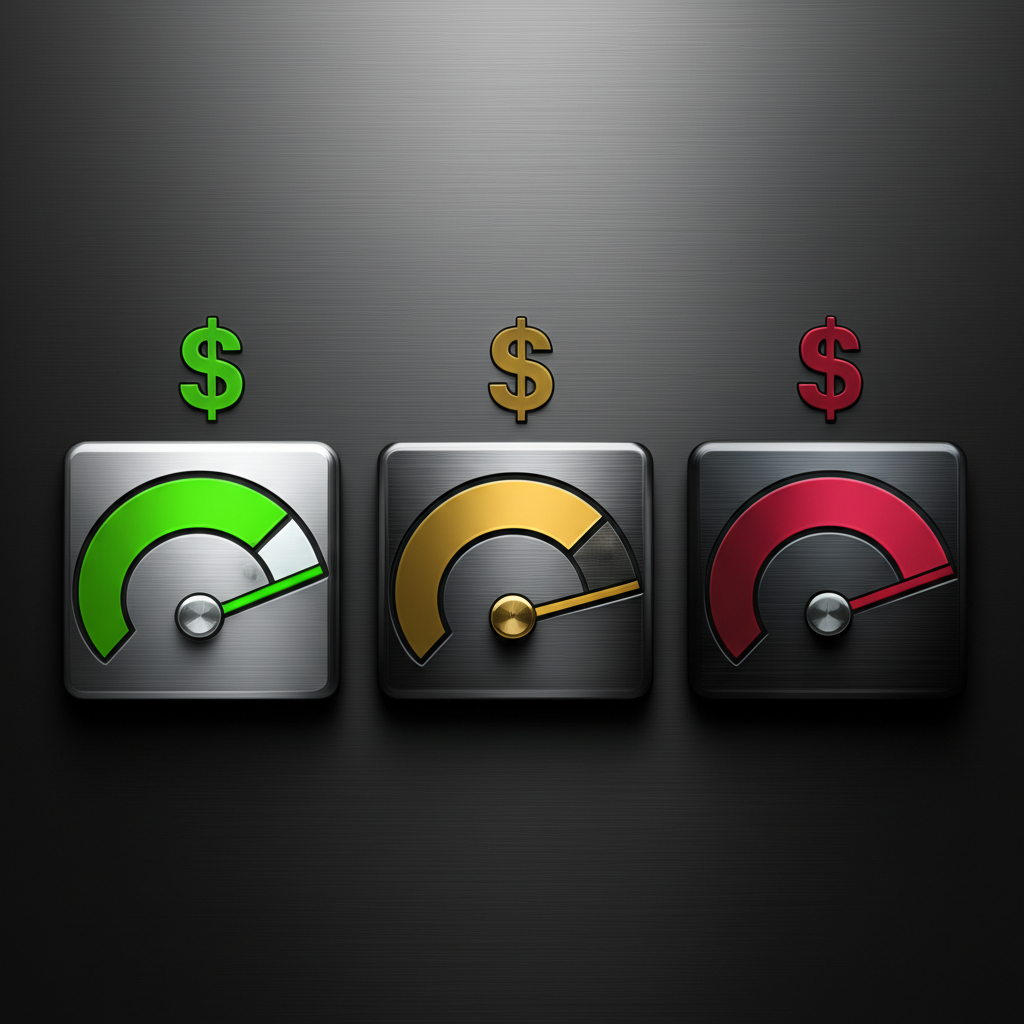Slash CNC Machining Costs With Smart Part Design

TL;DR
Optimizing part design to reduce machining costs hinges on applying Design for Machinability (DFM) principles. This involves simplifying part geometry, adding generous radii to internal corners, using standard sizes for holes and threads, and specifying loose tolerances wherever possible. Selecting cost-effective, highly machinable materials is also a critical strategy to minimize machine time, complexity, and overall expense.
The Core Principles of Design for Machinability (DFM)
Before diving into specific design changes, it's crucial to understand the foundational strategy behind cost reduction: Design for Machinability (DFM). DFM is the process of intentionally designing components so they can be manufactured in the most efficient and simple way possible. The goal is to minimize not just the time a part spends on a CNC machine, but also the complexity of the entire production process, from initial setup to final finishing. Every decision made during the design phase has a direct and often significant impact on the final cost.
The core principles of DFM revolve around two key objectives: reducing machining time and minimizing the number of operations. Machining time is often the primary cost driver, so designs that allow for faster cutting speeds and fewer passes will always be cheaper. This can be achieved by choosing materials with high machinability or by designing features that can be created with larger, more robust tools. As detailed in a guide from Protolabs Network, even small adjustments, like increasing a corner radius, can allow a machine to run faster and more efficiently.
Equally important is minimizing the number of machine setups. A setup refers to each time a part must be manually repositioned or re-fixtured to access different faces. Each setup adds labor costs and introduces potential for error. A complex part with features on all six sides could require six separate setups, dramatically increasing its cost compared to a simpler part where all features can be machined from a single direction. A key DFM strategy is therefore to design parts that can be completed in as few setups as possible, ideally just one.
Key Geometric Optimizations to Lower Costs
The geometry of a part is one of the most significant factors influencing its machining cost. Complex shapes, deep pockets, and delicate features all require more time, specialized tooling, and careful handling, which drives up the price. By making strategic optimizations to the part's geometry, engineers can achieve substantial cost savings without compromising functionality.
- Add Generous Radii to Internal Corners. All CNC milling tools are round, meaning they naturally leave a radius in any internal corner. Attempting to create a sharp or very small radius requires a small-diameter tool, which must move slowly and take multiple passes, increasing machine time. A simple rule is to design internal corner radii to be at least one-third of the cavity's depth. As Protocase explains, using the largest possible radii improves surface finish and reduces costs by allowing for the use of larger, more stable cutting tools.
- Limit the Depth of Cavities and Pockets. Machining deep pockets is disproportionately expensive. Standard cutting tools have a limited cutting length, typically effective up to a depth of about 2-3 times their diameter. While deeper cuts are possible, they require specialized, longer tools that are less rigid and must run at slower speeds to avoid vibration and breakage. Fictiv recommends keeping the depth of cut within five times the tool's diameter for end mills to ensure a good finish and lower cost.
- Avoid Thin Walls. Walls thinner than 0.8 mm for metal or 1.5 mm for plastic are prone to vibration, warping, and breakage during machining. To create these features accurately, a machinist must use multiple slow passes at a low cutting depth. Unless absolutely necessary for the part's function, designing thicker, more rigid walls will make the part more stable and significantly cheaper to produce.
- Simplify and Consolidate Features. The complexity of a design directly impacts cost. Symmetrical parts are easier to machine, and reducing the total number of unique features minimizes the need for tool changes. If a part has complex features like undercuts or holes on multiple faces, consider if the design can be split into multiple simpler components that can be machined easily and then assembled. This approach often proves more cost-effective than machining one highly complex part requiring a 5-axis machine and custom fixtures.

Smart Strategies for Tolerances, Threads, and Holes
While large geometric features are obvious cost drivers, small details like tolerances, threads, and holes can have an unexpectedly large impact on the final price. These features often require precision, specialized tools, or additional machine operations. Applying smart design strategies to these elements is a critical step in optimizing a part for cost-effective manufacturing.
Tolerances define the acceptable deviation for a specific dimension. While tight tolerances are sometimes necessary for critical interfaces, they should be specified sparingly. The tighter the tolerance, the more time, care, and inspection are required, which exponentially increases cost. As explained by MakerVerse, excessively tight tolerances can lead to increased tool wear, longer cycle times, and a higher scrap rate. For non-critical features, relying on the standard machine tolerance (typically ±0.125 mm) is sufficient and far more economical.
Similarly, holes and threads should be designed with standardization in mind. Using standard drill bit sizes for holes is much cheaper than specifying a non-standard diameter, which would require an end mill to slowly create the hole. When it comes to threads, their length should be limited. A thread engagement beyond 1.5 times the hole's diameter provides little additional strength but adds significant cost. For blind holes, it's also important to design an unthreaded section at the bottom, giving the tap tool clearance and reducing the risk of breakage.

Choosing Materials and Finishes for Cost-Effectiveness
The choice of material and required surface finish are final, crucial considerations in managing machining costs. These decisions affect both the raw material expense and the time required to machine the part. A material that is cheap to purchase but difficult to machine can ultimately be more expensive than a pricier but more machinable alternative.
A material's machinability rating describes how easily it can be cut. Softer materials like Aluminum 6061 and plastics like POM (Delrin) have excellent machinability, allowing for high-speed cutting and shorter cycle times. In contrast, harder materials like stainless steel or titanium are tougher to cut, requiring slower speeds and causing more tool wear, which doubles or triples the machining time. Therefore, unless the specific properties of a high-strength alloy are required, choosing a more machinable material is a highly effective cost-reduction strategy.
Another area for optimization is considering the manufacturing process of the material blank itself. Using a near-net shape blank, created through a process like forging, can significantly reduce the amount of material that needs to be removed by machining, saving time and reducing waste. For those in the automotive sector, for example, exploring options from specialists in this area can be beneficial. For robust and reliable automotive components, you can investigate the custom forging services from Shaoyi Metal Technology, which specializes in high-quality hot forging for the industry.
Finally, surface finish specifications should be carefully considered. The standard "as machined" finish is the most cost-effective option. Requesting smoother finishes requires additional machining passes or secondary operations like bead blasting or polishing, each adding cost. Specifying different finishes on various surfaces of the same part is even more expensive, as it involves masking and multiple processes. Applying a specific finish only where it is functionally necessary is a simple yet effective way to keep costs down.
Frequently Asked Questions
1. How to reduce CNC machining cost?
Reducing CNC machining costs involves a combination of design optimization, material selection, and process simplification. Key strategies include:
- Simplify Geometry: Avoid complex curves, deep pockets, and thin walls.
- Add Corner Radii: Use the largest possible radii on internal corners to allow for faster machining.
- Use Standard Features: Design holes and threads to standard sizes to avoid the need for custom tooling.
- Loosen Tolerances: Only specify tight tolerances on critical features where functionality depends on it.
- Choose Machinable Materials: Select materials like Aluminum 6061 that can be cut quickly.
- Minimize Setups: Design parts so all features can be accessed in as few machine orientations as possible.
2. What are the design considerations for the design of machined parts?
The primary design considerations for machined parts center on ensuring manufacturability and cost-effectiveness. This includes evaluating the part's geometry for simplicity and accessibility by cutting tools. Designers must consider the limitations of the machining process, such as the inability to create perfectly sharp internal corners. Other key considerations include material selection based on both functional requirements and machinability, appropriate application of tolerances, and designing features like holes and threads to standard specifications. Finally, designers should aim to minimize the number of machine setups required to complete the part.
 Small batches, high standards. Our rapid prototyping service makes validation faster and easier —
Small batches, high standards. Our rapid prototyping service makes validation faster and easier — 
